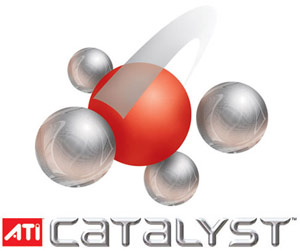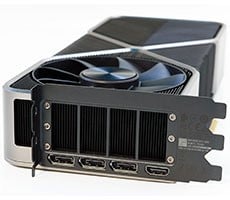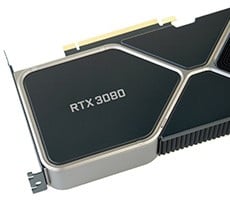ATI Catalyst 8.3 Sneak Peek: CrossFireX and More

About every year or so, the software team at ATI, which is now a part of AMD, produces a Catalyst driver suite that introduces a handful of major new features, above and beyond their regular monthly release. And at least so far, for 2008, this new Catalyst v8.3 suite appears to be that major release. We’re sure ATI will have more in store as the year progresses, but for now there is plenty of new ground to cover.
We were recently given a chance to chat with some folks from ATI about all of the new features they have in store for users with the Catalyst v8.3 release and we'll be outlining some of the finer details here today. In addition to the typical batch of performance enhancements and bug fixes available with each new Catalyst release, the v8.3 suite is going to deliver official support for three and four GPU CrossFireX and Hybrid CrossFire, plus some new anti-aliasing features, previously unavailable tweaks for video playback, and GPU LCD scaling, among some other things.

As we’ve mentioned, the Catalyst v8.3 driver suite will officially support three and four GPU CrossFireX configurations. You may have heard some scuttlebutt over the last few weeks stating that CrossFire works with some mismatched GPUs as well, which is actually the case. AMD's new Catalyst v8.3 drivers will let users match up Radeon HD 3870 X2 cards, with standard 3870s and even the 3850 - basically any RV670 / R680 combo will work. This is interesting because it adds some level of flexibility to end-users looking to take advantage of a multi-GPU setup. Three-way CrossFireX configuration can consist of three Radeon HD 3870 cards, or a single 3870 X2 and single 3870, for example, or any other combo of HD 3800 series cards. And four-way CrossFireX can be achieved with a pair of Radeon 3870 X2 cards, or four standard 3870s, etc. We should note, however, that three and four-GPU CrossFireX is only supported under Windows Vista and only with DirectX 9 and some DirectX 10 titles at this time. Full Support for DirectX 10 (with four GPU scaling) and OpenGL will come at a later time, although Call of Juarez happens to be one DX10 game that does scale currently with four GPUs. Also note, two card CrossFire is obviously still supported in XP; it's just the three and four GPU setups that are exclusive to Vista.
The challenges of running a multi-GPU setup are well known, so ATI is also taking steps in an effort to prevent end-users from having a bad experience, should a game not scale well with three or four GPUs. For example, games that don’t scale to four GPUs will likely be locked at three GPUs to prevent inferior performance or graphical anomalies. ATI noted they’ll be working hard to get as many games to scale on four GPUs as possible, but Vista bottlenecks due to the new driver model are going to take some time to overcome.
Hybrid CrossFire will also be officially supported in the Catalyst v8.3 release. As we outlined in our initial coverage of the technology, Hybrid CrossFire gives users the ability to pair an RS780G IGP with a discreet Radeon HD 3400 series graphics card for increased performance or low-power operation. We’ll be going into greater detail on Hybrid CrossFire and the RS780G in the not too distant future, so stay tuned to HotHardware for more on this topic soon. It won’t be long now, we promise.
Another interesting feature of the Catalyst v8.3 drivers brings added flexibility to multi-monitor users under Windows Vista. In the past, users were required to disable CrossFire to watch certain types of video or to utilize additional monitors. But with the Catalyst v8.3 release, that is no longer the case. With cards from the X1800 series on up to today’s HD 3000 series, utilizing an extended desktop in a multi-monitor configuration does not require CrossFire to be disabled.
Also new to the Catalyst v8.3 release is official support at the software level for DirectX 10.1 and the hardware tessellator built into the RV670 GPU. Although support for DX10.1 and hardware tessellation was available in hardware, the software mechanisms necessary to expose the functionality had not been incorporated into ATI’s drivers until now.
The Catalyst v8.3 driver suite will also feature a couple of new anti-aliasing modes. New to Catalyst v8.3 will be support for anti-aliasing in Unreal Engine 3 powered games and new edge-detection algorithms that work in conjunction with the Super-AA modes available with CrossFireX.










